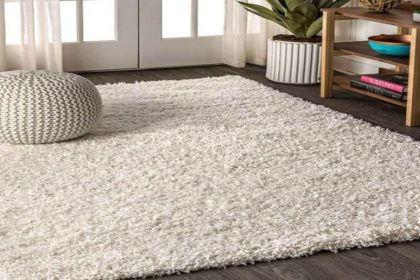- Prepare the surface – Before installing a wood floor, make sure the subfloor is clean, level, and dry.
- Consider humidity – Wood flooring requires a certain level of humidity to stay in good condition. Make sure the relative humidity in the room is between 45% and 65% and that your home is adequately ventilated.
- Acclimate the wood – Before installation, acclimate the wood to the humidity and temperature levels of the room where it will be installed. Place the wood in the room for at least 48 hours to let it adjust.
- Choose the right adhesive – To ensure a proper bond between the wood and the subfloor, use the right adhesive.
- Install planks from multiple boxes – When installing a wood floor, make sure to use planks from multiple boxes. This ensures that the color and grain pattern are consistent.
- Nail or glue – Depending on the type of wood you are installing; you may need to nail or glue the planks down.
- Fill gaps – After laying the planks, fill any gaps between the boards with a wood filler.
- Seal the floor – Apply a coat of sealer to the wood to protect it from water damage and wear.
How to Care for Wood Flooring
Sweep or vacuum the wood floor regularly.
Mop the wood floor with a damp mop and a wood floor cleaner.
Wipe up any spills or messes immediately.
Place floor mats or rugs in high-traffic areas to prevent scuffing and scratching.
The place felt pads on the bottom of furniture legs to prevent scratching or denting.
Avoid using harsh cleaners or abrasives on the wood floor.
Reapply a protective finish to the floor every few years to keep it looking its best.
FAQs on Wood Flooring
Q: What are the different types of wood flooring?
A: The most common types of wood flooring are solid hardwood, engineered hardwood, laminate, and vinyl.
Q: What is the best type of wood flooring?
A: The best type of wood flooring depends on your individual needs and preferences. Solid hardwood is the most traditional and natural option, while engineered hardwood is more durable and long-lasting. Laminate provides a realistic wood look at a lower cost than solid or engineered hardwood, and vinyl is the most affordable and easy to install.
Q: What is the average cost of wood flooring?
A: The average cost of wood flooring can vary depending on the type of wood and the size of the area being covered. Generally, solid hardwood is the most expensive option, followed by engineered hardwood, laminate, and vinyl. The cost can range from $2-$20 per square foot.
Disadvantages of Wood Flooring
- Expensive: Wood flooring can be more expensive than other types of flooring such as laminate or vinyl. 2. Vulnerable to Damage: Wood flooring is vulnerable to scratches, dents, and other damage.
- Prone to Moisture Damage: Wood flooring is prone to warping and discoloration from moisture.
- Requires Regular Maintenance: Wood flooring needs to be regularly waxed, sealed, and polished to maintain its appearance.
- Difficult to Install: Wood flooring is difficult to install and generally requires the help of a professional.





